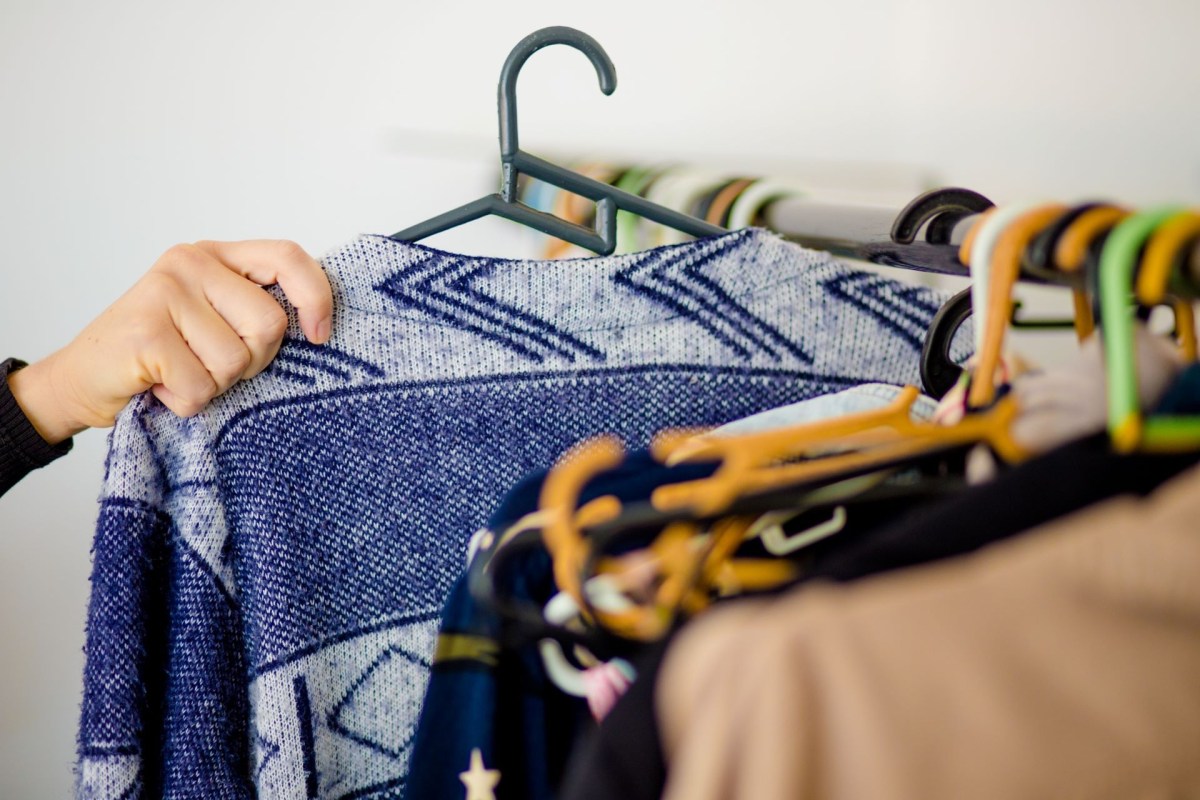Popular resale sites, like Depop and Poshmark, provide simple ways for individuals to sell secondhand clothing online.
Rolling Stone reports that many users on these platforms are resellers who source their clothing from thrift stores, rather than their own closets. For years, there has been controversy online about this practice and whether it's taking clothing resources away from those who need them more — but some say this conversation may be distracting from the bigger problems with the fashion industry.
What are resellers doing?
Rolling Stone explains that resellers buy inexpensive clothing from secondhand stores, then sell it on Depop at a markup.
To make sure their merchandise will sell, they look for items that are in good condition and may be coming back into style. They may also clean and repair their finds and style them with trendy outfits to show off the pieces in listing photos.
Some crafty thrifters even alter the clothing they buy. They may redesign a long dress into a short one, cut up a large garment into fabric for a smaller one, or add embellishments like ribbons and rhinestones. This approach is popular not only among sellers but also among individual buyers who want unique pieces to wear themselves.
Why is this controversial?
Buying secondhand is a well-established way to avoid participating in fast fashion, a wasteful business model that encourages people to buy much more clothing than they need and then discard it quickly.
Thrift stores help turn those expensive, discarded clothes into affordable resources while keeping them out of landfills, benefiting buyers and the environment.
But some people believe that those benefits should only be for individual buyers who intend to use what they purchase, Rolling Stone explains. They see reselling items as taking them away from poor communities that may rely on thrift stores for their clothing and as exploiting this community resource for personal profit.
However, as Rolling Stone points out, there is more clothing in secondhand stores right now than anyone could ever buy. Donation bins overflow with clothing, and Atmos reports that the extra often ends up in landfills, sometimes in other countries.
"Where I live, there are 20 Goodwills," an Instagram thrifter named Jacklyn said in a post after coming under fire for her resale business. "All overflowing, all restocking hourly, and all sending truckloads of excess clothing to the bins."
Cora Harrington, a fashion expert and author, expressed on Twitter that "shopping secondhand shouldn't just be something poor people do."
"There is no shortage of secondhand clothing on this planet. We are not about to run out of used clothing," she wrote. "Though that mindset does explain why folks fight so hard to defend shopping at Shein."
Worthy of note is that the people combing thrift stores for items to resell are often the same disadvantaged people that critics say should be the ones to benefit from thrift stores, Rolling Stone notes.
Jacklyn, for example, was a poor college student who is now paying her bills thanks to her work finding, styling, and selling secondhand clothes.
Ultimately, every piece of clothing that is bought from a thrift store, whether it is resold or kept, is one less item in a dumpster — and one less item purchased from a fast fashion retailer.
"All these conversations about garment worker exploitation, sweatshops, environmental pollution, the literal dumping of shipping containers full of secondhand clothing in poor countries," Harrington wrote on Twitter. "Buying secondhand is the more ethical choice."
Join our free newsletter for easy tips to save more, waste less, and help yourself while helping the planet.









